#ninja gaiden spotlight
Explore tagged Tumblr posts
Text
Game Spotlight #13: Nioh 2: Complete Edition (2020)
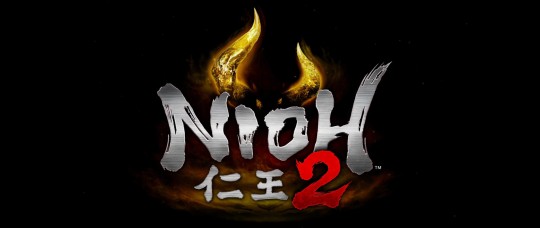
Acquired Stardust's first game spotlight of the new year is here! Come along with Ash on a long look into one of the greatest games of the past generation and a little bit of a look into where its influences, and even its overall genre, lie.
As previously discussed, I think Nioh is a title that lives and dies by its comparisons to Dark Souls. Director Fumihiko Yasuda has been transparent in his admission that Nioh was inspired by Dark Souls, and the influence is clear. As a matter of fact I don't think it's a stretch to say that after a decade in development hell it's likely due to the success of Dark Souls that Nioh was able to see the light of day in the first place. Team Ninja cleverly designed the opening hours of Nioh 1 to appeal to fans of the smash hit Souls series with eerie, tense enemy introductions and a slow combat system that eventually gives way to a deep and fast action game by the time the opening hours of the game are up, at which point players coming to Nioh simply for more Dark Souls are lead to one of two conclusions: either 'this isn't Dark Souls and that sucks' or 'this isn't Dark Souls and that's awesome'.
The slow burn of Nioh revealing its identity to the player as not just a mere Soulslike, instead an unmistakable fusion of Blizzard's Diablo and Team Ninja's own previous success Ninja Gaiden, is a satisfying one. Seeing a game go from standing in the shadow of another massive success to one with its own impressive vision and execution all in a single game, within the space of just a few hours, was one of the coolest experiences I've had with a game. It's my pleasure to report that Nioh 2 doubles down on everything that made the first game special, and represents an official divergence from the label of Soulslike into a little-discussed larger genre known as 'masocore'.
"Masocore" is a large umbrella, a broad style of game and design philosophy, with titles that span a variety of genres from precision platformers to action games and everything in between. And while you may not have heard the term before it's not a new phenomenon per se as you're likely more familiar with the saying 'Nintendo hard' that hearkens back to the era of the Nintendo Entertainment System when games were often cryptic and overly punishing in their designs. It is the goal of masocore games to deliver those sorts of punishing and oppressive experiences to players so that the eventual triumph feels all the sweeter. Not every developer has the vision and expertise to deliver on the promise of the genre - not so with Nioh which saw an incredible utilization of the nature of masocore titles to effectively communicate not just its brutal setting but provide a deep sense of immersion to its gameplay. While many developers simply wear the masocore aesthetic as a gimmick, Team Ninja utilized it expertly in the original Nioh title and continues to do so in its sequel.
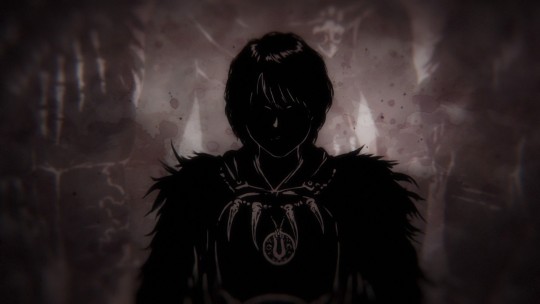
It's also important to note that while you may not have heard of the masocore term, Nioh series director Fumihiko Yasuda most certainly has and while he has freely admitted the influence Dark Souls had on his project he's never actually called the games Soulslikes - he instead refers to them himself as masocore titles. The label of 'Soulslikes' was inevitably but perhaps unfairly attached to Nioh from the start, but is certainly unwarranted for Nioh 2 which represents a bold step forward in both vision and execution for a series that already shined bright in these areas and a complete divergence from any attempt to bridge the gap between fans of Dark Souls and Nioh, proudly wearing its vision on its sleeve from the start.
Featuring every single mechanic from Nioh 1, an already staggering number of ways to interact with a game of surprising and impressive length, Nioh 2 does indeed double down on all of them. On top of every weapon type from the previous title returning with new and reworked abilities as well as three stances (each with their own movesets attached to them), Nioh 2 adds a whopping four additional melee weapon types along with new ninjutsu and onmyo magic techniques as well as making both of those categories much more viable for use. The Living Weapon and Guardian Spirit mechanics make a return and has seen a significant expansion, replacing its upgraded moveset per weapon with three unique forms with movesets tied to them based on the classification of the currently equipped spirit (that's Brute, Feral and Phantom classes) each with their own Burst Counter unique to each class of guardian spirit. Burst Counters are a new mechanic that allows the player to interrupt big telegraphed enemy attacks (always associated with a red glow) and create an opening for offense, with the counter using a small portion of the new Anima gauge.
The Anima gauge is also used for the game's most impressive and obvious addition to the gameplay formula with Yokai Abilities, which sees enemies have a chance to drop a Soul Core which can be equipped to your Guardian Spirit (for a total of up to three different cores) and allow you to perform an attack based on the particular enemy you obtained the Soul Core from. There is an impressive number of these Soul Cores in the game, with the majority of enemies being able to drop them, and each comes with an array of passive effects (some of which baked in and inherent to the particular enemy type, some of which are randomized) tied to the Soul Core which adds an astounding number of additional opportunities for customization. Just as well there are the new Demon Scrolls, items obtained starting only on the game's first run of New Game Plus (of which there are 5 total difficulties, each with their own escalating recommended levels as well as featuring remixed and new encounters).
Demon Scrolls drop randomly from enemies, similar to Soul Cores, and give the player a repeatable arena-style fight with predetermined enemies that ultimately turns the Scroll into an equippable item with an increasing number of passive bonuses depending on the tier of rarity of the Scroll. These encounters, repeatable, can be utilized to farm Soul Cores and items from specific enemies but also allow the player to reroll one effect from the Scroll upon subsequent completions of the battle.
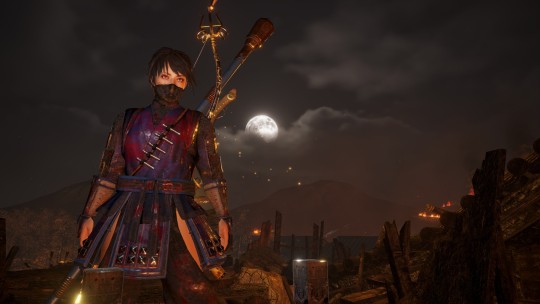
It isn't only the gameplay systems that have seen an impressive expansion and upgrade that doubles down on the original's vision. Opening in the middle of the Sengoku as opposed to the tail end of it like in Nioh 1, we are treated to a surprising and impressive character creation suite with lots of room to create your own character or even attempt to recreate one from various media before being launched into its significantly more complex story.
Opening with our protagonist having a chance meeting with a young Kinoshita Tokichiro, one of history's least likely success stories and most fascinating people, the base game storyline of Nioh 2 chronicles his meteoric rise through the rigid social strata of the turbulent Sengoku era Japan in a roughly 60 year period before his eventual fall. The story features a higher number of active characters and even deeper ties to real-world history, as well as many instances of toying with history and verging into alt-history in fun ways and culminates in a surprisingly touching way before picking back up in an awesome epilogue and its three DLC episodes.
It is unafraid to throw gamers headfirst into the complex web of events and does not hold the player's hand through the twists and turns of territorial gains and political allegiance swaps, in part because it offers a surprisingly robust encyclopedia that features entries on each and every character in the game that unlocks subsequent lore entries as you advance through the game for those who would like to really study the events of the game which largely mirror actual history. As an aside the game sees my favorite integration of face scanned actors in all of gaming, which often feels like hollow and distracting celebrity cameos to me. The casting of Naoto Takenaka as Tokichiro is a particular stroke of genius in this regard, as the actor has played the historical figure several times previously in live action and his unique voice, sounding less like an overly polished voice actor and more like a person you could actually talk to in the real world, lends a remarkably genuine human element to an otherwise larger than life character.
Nioh 2's encyclopedia also extends to the game's large variety of enemies, again split between human and the demonic Yokai, with the majority of Yokai based on actual Japanese mythology. These Yokai have their own language that is heard and seen through undecipherable subtitles upon picking up a Soul Core, with enough Soul Cores having the benefit of translating the aforementioned subtitles and providing a little more insight into the particular Yokai.
Speaking of the different enemy types and changes to the game, Nioh 2 features a drastically higher ratio of Yokai enemies than the original game and marks another real divergence point in how it feels to play. Yokai, who's ki must be depleted before there are real guaranteed openings to attack them (with said ki only being able to be reduced through risky attacks you shouldn't fully commit to lest you tempt a swift death), are prone to otherwise unpredictable amounts of hyper armor that ignore the hitstun of your attacks. They most certainly require a different mindset and skillset to battle, and the huge increase in Yokai enemies may deter some players but it does offer a lot more opportunity for various elements of the game to shine. Tonfa in particular, which eventually allow for the player to animation cancel significantly more often than other weapons, provide a really engaging sense of interaction against these lethal enemies.
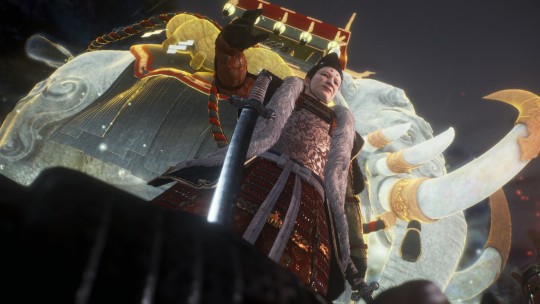
With the increase in Yokai enemies comes an unavoidable fact: Nioh 2 is considerably harder than the first entry on a base level. Enemies are harder to interact with in favorable manners and are faster, often with wider ranging attacks radiuses and trickier animations. Burst Counters and Yokai Abilities added into the mix also highlight the issue of input bloat from the first title that has only gotten worse with the increase in difficulty and overall game speed. While certainly absolutely more challenging and even challenging in meta ways like input bloat I do not consider this a flaw per se - it is merely a mild growing pain in the long journey towards mastery of the game mechanics that is, of course, part and parcel with the masocore genre. You are meant to be challenged and feel like survival, nevermind comfortability, are impossibilities and that feeling of danger helps sell the story, world and their stakes incredibly well. Mastery over the game's overwhelming number of mechanics and potential interactions is a long road but more satisfying than almost any other game I've had the pleasure of experiencing.
Of course, this being The Complete Edition, Nioh 2 does feature three DLC episodes bringing more story content and side missions that explore other fondly regarded periods of Japanese history and further utilize the characteristics of the masocore genre to make a very salient point about history: there is no utopian past from which we have strayed. Frantic soldiers in the Genpei War lament their helplessness, villages burn and their inhabitants are massacred, and discrimination sets people down the path of bloody revenge. While there may indeed be heroes and heroism, life has and always will be a brutal struggle against the harsh realities of nature as well as against our own worst instincts. These expansions to the base game are each as fascinating and satisfying as the base game, and can feel just as meaty with the content included, which is a real testament to the overall vision and its execution.
While much has been made of Nioh's connections to and divergence from the Soulslike label, its connections to Diablo and Team Ninja's previous outing in the 3D Ninja Gaiden games run far deeper. In fact while many of the references made in the first Nioh have been retained (such as cameos from series regular Muramasa with the same design as in those games as well as Nioh's small treasure chests' designs being directly lifted from the Ninja Gaiden games) there are even more that have been included in Nioh 2. The Tsuchigumo ninja, rival clan to Ninja Gaiden's protagonist clan, see a glorious return to gaming complete with their eponymous Yokai making an appearance. Ninja Gaiden 2 (2008) opens with an enemy throwing hatchets at protagonist Ryu Hayabusa and Nioh 2 manages to include the same hatchets as a new usable weapontype complete with a weapon throwing mechanic for them. The masocore genre existed long before Dark Souls became synonymous with it and there was a time Team Ninja was thought of as being the kings of it in the days of a waning scene for Japanese games, perceived as being well into a decline in the aughts.

The rise of the blockbuster shooter in the mid to late 2000s completely changed the discourse around video games for one simple reason: it introduced so many people to gaming that many of the people talking about games now simply weren't around then, and many who were around then were likely too young to be playing much beyond what completely gripped the entire mainstream gaming scene at the time. A million games came and went while the likes of Gears of War, Halo and Call of Duty monopolized our collective playtime and this time in gaming is poorly remembered because of it. One such example of this is the way in which Dark Souls has become quite so synonymous with 'hard games', to the point that even Crash Bandicoot, returning to prominence thanks to a wonderful remaster of the original trilogy, has often been called "the Dark Souls of platformers" despite its entire existence playing out well before Dark Souls was born.
Nioh's bucking of the monopoly From Software's Dark Souls (along with Sekiro and Elden Ring - perhaps spotlights for another time) have on our perception of and conversation around hard games is significant, and its place among the upper echelon of masocore titles is simply undeniable. Bigger and better in almost every conceivable way than its already fantastic and extremely dense predecessor, Nioh 2 is easily able to keep you busy for several hundred hours provided you're willing to give it that much time. It's also developed with multiplayer in mind in a significantly deeper way from enemy attack animations to the push and pull of the Assist Gauge as well as a reliable scaling down of player stats if there are large discrepancies to keep things relatively on the rails, making for a wonderful experience with up to two other players across the vast majority of its missions.
Nioh 2 is unquestionably worth every minute you're willing to put into it, and likely even more no matter how much you've spent on it. The sheer breadth of the experience is almost too much to describe and encapsulate in this spotlight - it needs to be experienced first hand to be truly understood.
A gem hidden among the stones, Nioh 2 is undoubtedly stardust.
--Ash
#gaming#video games#acquired stardust#ash#pc gaming#pc games#ps4#ps5#koei tecmo#team ninja#nioh#nioh 2#sengoku#games writing#game spotlights#game recommendations#ninja gaiden#masocore#koei#tecmo
11 notes
·
View notes
Note
I tried so hard to like sarada and even try not ignored her sharing sakura's personality. But right now in the manga her character is frickin useless and add nothing to the plot. Total Irrelevant character and undeserving of the spotlight. Main side characters like Mitsuki, eida daemon and shikamaru, amado, sumire and konohamaru are getting wasted and ignored for her spotlight and potential. Not only sss ruined sasuke image and whole character building personality but sarada keeps acting and disgrading as being the uchiha.
Sarada haruno suits her better than uchiha.
The thing is I did like Sarada at first in Gaiden and the Boruto movie her personality didn't seem that bad.
When the Boruto manga and anime started they ended up giving her to much of Sakura's personality and it was all the bad parts of it as well.
Then her actual role in the story is just being side lined like Sakura was and when she does get involved things get worse like Boruto losing an eye or that leaf ninja being turned into a tree.
Yeah as an Sarada leaves much to be desired even her clothes move away from the high-collared outfits the clan tend to favour. She would have been so much better if she was more like Sasuke.
3 notes
·
View notes
Text
Ninja Gaiden 4 is the Xbox Developer Direct mystery game, and is being co-developed by Team Ninja and PlatinumGames
Ninja Gaiden 4 sees both Ryu Hayabusa and PlatinumGames return to the spotlight in ‘Fall 2025’. Read More
0 notes
Text
Hold onto your controllers because Ninja Gaiden 2 Black has officially dropped, and it’s everything we’ve been waiting for! The beloved action-adventure title from Team Ninja is back in the spotlight with a new, high-definition remake that brings the chaos and bloodshed of Ryu Hayabusa’s journey to the next-gen level.
#ninjagaiden #xbox #gaming #gamingcommunity #technews #entertainmentnews #entertainment #NewsUpdate #news #TNN
#ninjagaiden#xbox#gaming#gamingcommunity#technews#entertainmentnews#entertainment#NewsUpdate#news#TNN#breaking news#world news#usa news#us news#canada#donald trump#hollywood news#sports news#sports
0 notes
Text
Youtube Recommendation: Summoning Salt
Time for something quick and simple, I think. I might be sprinkling posts like this throughout the year here and there, just using this as an excuse to talk about another creator that I really like.
So, any speedrunners in the audience?
Speedrunners both terrify and intrigue me. Even when watching a middle-of-the-road run, or an old run that is vastly outdated by modern techniques, I am always stunned and mystified by the amount of skill, planning, and tenacity that goes into making them work, the hours and hours put into playing the same game over and over again, stripping it down to its absolute bare essentials and looking for breaks in the chain, openings in the plate, which can be exploited as much as possible.
And as much as I love hearing the technical side of all these things, what I love most is learning about the journey that a game takes to become a heavily played speed game.
If you've had any sort of interest in speed running a game, or the practice or people in general, chances are good you've come across videos made by a Youtuber named Summoning Salt. Summoning Salt's videos revolve entirely around speed running, which makes sense considering Salt himself is a very accomplished speedrunner, holding 1st place in six different categories for Mike Tyson's Punch-Out!! on the NES. This intimate knowledge on the ins and outs on the process of speed running, and his own experience, lends his videos an important touch of professional knowledge.
His output primarily consists of videos covering the history of the speed running community and record for a particular game, and he doesn't just cover the big games either. While yes, he has touched on games like Mike Tyson's Punch Out, Super Mario 64, and the Mario Kart series, but he's also covered games you really wouldn't expect to HAVE a speed running community, like Wii Sports or the Lego Star Wars saga. He's also done videos spotlighting the careers and attempts to beat the records of prominent speedrunners, like Abney317 in Mario Kart 64 or Jimmypoopins in Ninja Gaiden 2, or videos concerning very specific categories within a community. He's done videos on blindfolded Punch-out and Super Mario 64, as well as a video on the Wii Sports Golf game specifically, for example.
And these videos are like potato chips. I can't watch just one, despite the rather impressive length of them. His older videos usually range between fifteen minutes and a half hour, but his recent videos range anywhere from between forty-five minutes to upwards of two hours as he goes into massive detail on the history of a game, going through every discovery for glitches and techniques, and probably most importantly, highlighting every player that helped to push the game forward or challenge the community's status quo, no matter how small of a role they might have played in the grand scheme of things. No detail is too small if it means talking about some interesting aspect of the game.
His videos are also incredibly easy to understand as well, which lends them well to those who aren't really into speedrunning or might be new to the community. he does use language and terms that are intrinsic to speedrunning, but he generally does a good job of explaining what those terms mean in a way that is very accessible. I compare that to videos from mother speedrunning focused channels that are really into the technical side of things, like Bismuth. Bismuth is another great speedrunning channel, but focuses more on explaining, in great detail, the technical aspects of how certain tricks and glitches work. To give you an idea of their breadth of knowledge, their biggest project is an exhaustive 5+ hour long documentary explaining all of the history and technical aspects behind the A-button challenge, where people try to beat Super Mario 64 using as few A-button presses as possible. It's a really interesting watch, at least to me, but due to the technical nature of their videos, Bismuth's stuff is a bit more niche. Summoning Salt's videos are much more simple, and he uses languages and explanations that are pretty easy to understand, often not bothering to go in depth into the technical aspects of what makes certain tricks work beyond what is necessary to understand the idea behind it, or just skip over the technical details entirely if it would slow down the video, which is focused more on the human element of speed running, the drama and high emotion of trying to reach, and keep, a record.
Even if you're an outsider looking in, I would highly recommend checking out Summoning Salt's channel, just for the entertainment value alone. Ultimately, the videos are stories about the people behind the records, who made the community what it became, rather than focusing on the game itself, and I think that's what makes it so fascinating to watch. Here are a few recommended vids that I personally enjoy:
Recommending Videos:
The History of Blindfolded Super Mario 64: At the time of my writing this, this is actually the most recent video on Salt's channel. Not the first ‘blindfolded’ video he's done, but I feel like this one better exemplifies the absolute struggles of playing a well known game without the use of sight AND doing it quickly.
The History of Wii Sports World Records: An excellent example of just how Summoning Salt can take something that, conceptually, shouldn't be that interesting or epic, and through just telling you about the people and just how it started to gain popularity, he gets you to care about something as silly sounding as the world record for marathoning all the games in Wii Sports as fast as possible.
The Quest to Beat Matt Turk: This was the video that got me into Summoning Salt's channel, a story about how a dead speedrun community was given new life as a series of runners came together with the collective goal of trying to beat the individual times of the runner who held the world record in every single fight in Punch Out.
The History of Super Mario Bros 3 100% World Records: This is a good blueprint for how most of Salt's videos tend to play out, and it's for a game that is incredibly well known. This is a quintessential Summoning Salt video and will probably give you a really good idea as to whether or not you'd enjoy his content.
0 notes
Text
0 notes
Photo










Ryu Hayabusa
The Super Ninja
101 notes
·
View notes
Note
From mentioning the technical aspect of fighting games, I'm guessing you're not a big player of really fast paced action games like Bayonetta, the 3D Ninja Gaidens, DMC, MGRising, etc? At least not on the highest difficulties? Or is my guess completely off base once you switch from pvp to single player?
It's a whole different thing in single-player - AIs, no matter how good, have recognizable rhythms that I don't get from human opponents, and there's far less feeling of being judged.
We can do fast-paced action; we can do a certain degree of technical skill in terms of remembering and making use of various button combinations. Doing high levels of both of those while trying to predict a human opponent and manage spotlight stress is just too much. (Arkham games our beloved; they're rhythm games disguised as beat-em-ups with zero competitive element)
As a general rule, we'll take a game at its default difficulty to start; once we've got a good feel for its rhythms and playstyle, we turn it up to the point where it presents a challenge without overwhelming.
7 notes
·
View notes
Text
Game Spotlight #12: Nioh: Complete Edition (2017)

Acquired Stardust's latest game spotlight is here! Join Ash as she takes a look at the most recent game featured on the blog so far in 2017's Nioh: Complete Edition! Often misunderstood and mislabeled, let's examine the game and see some of what makes it such a standout title. As usual from an Ash piece there's a long read ahead, so buckle up!
Larsa and I are big fans of Koei-Tecmo's work and are naturally huge history nerds, with two subjects that we love being frequent settings for the company's games. Hearing that they were finally releasing a new IP that was set in a familiar period for the company and its fans definitely had us interested. Rising from the ashes of a decade-plus stint in development hell, Koei-Tecmo's Nioh began development before the two companies had even merged. Starting all the way back in 2004 Koei sought to develop a game apparently based on an unproduced Akira Kurosawa script which meandered through several incarnations before ultimately being handed off to Tecmo's Team Ninja and entering real development in 2014. The resulting project caught gamers by surprise in its evolution of the portfolio of a company often labeled as releasing 'the same game every time' by those largely outside of the fandom. Although it stuck to familiar territory of flagship franchise Samurai Warriors in its setting of late-Sengoku era japan, the tone and gameplay had changed drastically from what had been traditional Koei-Tecmo territory. Gone was the romanticized heroics and melodrama, and KO counts that could be racked up well into a thousand enemies by playable characters that were essentially superheroes. In its place was a dark, ominous, sinister tone that was decidedly more grounded. Although character design remains impressively strong as is tradition for the company, Nioh features a less anime aesthetic than the company is known for for the most part with fairly realisitic depictions of its historical cast. Just as well the game veers significantly into appropriately bloodsoaked horror territory given its setting of turbulent late-Sengoku Japan, a stark contrast from the bloodless battles of Warriors games.
Alongside this tonal shift was a shift in its gameplay. Warriors games are something of a comfort food - they are relatively simple and easy, often described as 'button mashers'. It's true enough that they tend to allow you to coast through them doing just that, though there is a depth to the combat systems that often goes unexplored. Nioh's gameplay mechanics complement its horror very well and have taken a shift towards a style that emphasizes its reframing of the Sengoku. Players are able to select two weapons from an array of seven melee weapons as well as two weapons from an array of three ranged weapons as they take control of William Adams and take their first steps into Japan in 1600.
Gameplay is, at first, a slow and deliberate experience. Attacks are able to inflict fatal damage in just two or three hits, so attention and patience are not only rewarded but demanded on a base level. Players quickly learn the value in blocking and dodging enemy attacks which often come in combos of multiple blows as well as from range. Managing William's stamina meter, in this game referred to as the ki meter, is also important and more involved than one might expect with the 'ki pulse' mechanic in which the player is able to restore a portion of their meter immediately which enables further attacks and dodges with less downtime. Enemies are a wide array of human and demonic yokai who must be fought differently both as individuals (as in, for example, what weapon each may have) as well as a species with the universal stamina ki system functioning differently between human and yokai enemies.
If any of this is sounding familiar to you, you're not alone: Nioh is often referred to as a 'Soulslike', a genre of games that take deep inspiration from From Software's Dark Souls series which itself has roots in From Software's earlier King's Field series. Nioh often lives and dies by this comparison and most players come into it with a lot of preconceived notions of what exactly 'Soulslike' is and either fall in love with the differences or can't get over them and put the game down. That being said, there are indeed differences and despite its similarities Nioh is not a simple Dark Souls clone.
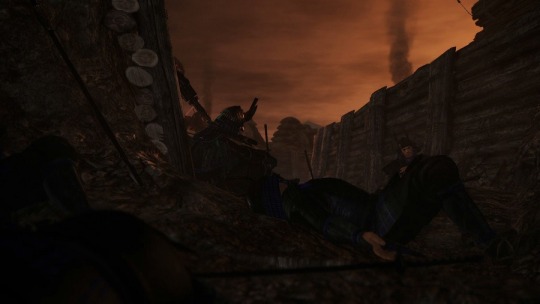
Nioh is most certainly a result of Dark Souls' success, and that much is indisputable. Dark Souls is responsible for reminding the world just how much it really liked cryptic, tense, unforgivingly difficult experiences so much so that even updated ports of things like the 2017 Crash Bandicoot N. Sane Trilogy was discovered by a generation of gamers and labeled "the Dark Souls of platformers" for its difficulty. In many ways after years of obscurity From Software has fundamentally changed the way we look at and talk about video games as a whole, with even games released well before their Souls series being compared to it.
Although Nioh owes its exit from development hell into the hands of gamers to Dark Souls insofar as its tone and difficulty being inspired by it, Nioh actually owes much to two games that are compared to it far less: Koei-Tecmo's similarly brutally difficult series of Ninja Gaiden games and Blizzard's Diablo. Combat is significantly deeper than Dark Souls' even from the jump with each of the seven melee weapons each having three different stances players can switch between on the fly, each with their own strong and weak attacks and combos. As players explore the RPG mechanics (also a Soulslike staple) they also discover a long list of abilities to unlock for each of the game's seven melee weapons that add new abilities and moves to the combos. The result is a game that almost feels significantly more like 2008's Ninja Gaiden 2 on the Xbox 360 than Dark Souls, with fast paced and tense action that results in either bloody dismemberment for your enemies or a swift death for the player.
Just as well there are also several classifications of armor with many different individual pieces within those classifications, some of which can give the player a bonus when assembled together as a set. Alongside this are countless different weapons within the ten total offensive weapon categories, with gear (all of which have their own levels of quality and stats) frequently being dropped by enemies upon their defeat. Needless to say the loot aspect of the game, itself not entirely unfamiliar for Souslike games, is significantly expanded upon in Nioh especially postgame to the point it much more closely resembles classic PC release Diablo 2.
There are a staggering number of ways to play the game as in addition to all of the gear, weapons, builds and stances there are ninjutsu and magic skills, items and 30 different spirits the player can equip with various different effects, all of which can be summoned as part of Living Weapon mode which sees William manifest the spirit into his weapon for a brief powerup that allows him to devastate enemies. Just as well there is a vast array of clans the player can join, all historical powerful factions of Japan's Sengoku which provide different bonuses and is one layer of the game's multiplayer component. This variety is served well through the base game's brutal difficulty as well as its three DLC scenarios and its equally staggering three additional difficulty levels of new game plus.
Aforementioned multiplayer component comes in multiple forms. Players leave graves where they die which can be summoned as fightable AI-controlled revenant that can drop their gear and glory, a currency used to trade for items or character models of Nioh's vast array of characters that the player can transform into, replacing William in normal gameplay outside of cutscenes. Glory also contributes to the faction wars - a race between the White and Red factions to see who can earn the most in intervals with the winning side awarded discounts in glory-accepting transactions. Players can also face each other in direct player-versus-player combat, and are even able to tackle the entire game together cooperatively.
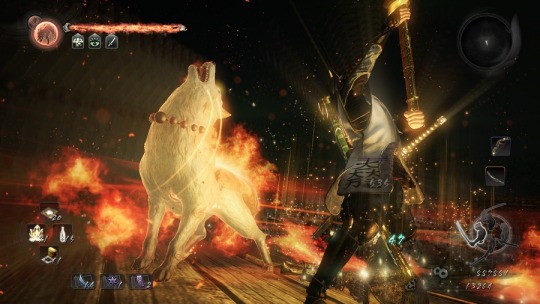
You might've noticed that the player character I mentioned earlier, William Adams, is most certainly not a Japanese name. And that's because he isn't (duh!). William is a relatively obscure historical figure who was one of the first non-missionary westerners in Japan as well as one of the few and earliest western samurai. William is an Englishman chasing alchemist Edward Kelley across the pacific ocean to reclaim William's personal guardian spirit, stolen in an encounter with Kelley in the game's opening stage. After his search takes him to Japan William finds his familiar tangled web of influence and power between England and Spain has become all the more complex with the addition of Japan's own political turmoil of the late Sengoku period.
Through the course of the game William finds himself eventually aligned with the Tokugawa forces by way of Hanzo Hattori, a bilingual ninja in service of Ieyasu Tokugawa. Nioh's campaign and DLC takes the player through several highlights of the late Sengoku period which are the game's absolute highlights. Although featuring a wide variety of stages set in varying locales such as cave systems, shipwrecks and ruined temples, it is these recreations of historical battles that the game truly shines with. The base game's recreation of the Battle of Sekigahara is one of my favorite parts of any video game for its melding of historical accuracy and dark fantasy elements. For us history nerds there is nothing quite like the haze of that morning's battle and the show-don't-tell approach much of the game takes with its environmental storytelling. One way this is achieved is through the largely unsubtitled gameplay segments (though the cutscenes do feature subtitles), with NPCs uttering Japanese phrases to William who naturally does not understand them. It's a fun little thing that helps convey the fish out of water elements of the story and rewards players who can speak the Japanese language (of which I am one). Another small moment is in the aformentioned Battle of Sekigahara where a small band of men clad in Kobayakawa-clan emblems charge up the battlefield without stopping to tell the player who they are or explain that the momentum of the skirmish has definitively swung in the direction of the Tokugawa forces. It's a small but memorable moment rewarding big history nerds like myself and Larsa that have memorized much of the intricate tumult of the Sengoku that has stuck with me well into my 200-something hours spent with the game in its various levels of difficulty and gear grind.
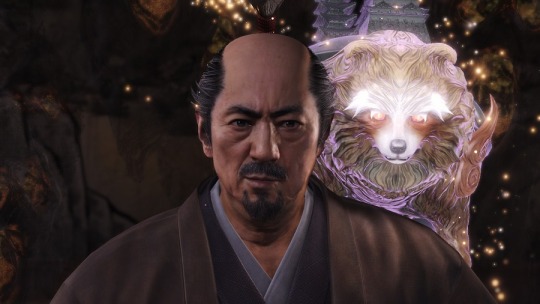
The trend of the game's highlights being the recreations of historical battles is never more apparent than in its DLC scenarios Dragon of the North, Defiant Honor and Bloodshed's End which follow the post-Sengoku struggles against the Date clan as well as the winter and summer sieges of Osaka respectively. Winter's Osaka siege stands out as perhaps the best depiction of war in a video game with the level design and gameplay elements lending itself extremely well to portraying the sheer horror that must've entailed battle in the Sengoku with exhausted enemies surprising each other with their presence in the stage's tight trench corridors before engaging in quick and bloody battles to the death. Defiant Honor's Winter siege of Osaka culminates in a battle against legendary samurai Yukimura Sanada in another particularly memorable moment, featuring a more grounded design than his Samurai Warriors counterpart (although his armor is based on his real historical suit which was also featured as an alternate costume in Samurai Warriors 1), Yukimura wields his iconic traditonal Japanese jumonji spear as featured in Samurai Warriors and even has a few moves reminiscent of his moveset as a playable character in that franchise.
On the subject of further historical matters Nioh furthers the trend Koei kickstarted by reexamining Mitsunari Ishida with his moral fiber and his place in history, featuring a touching moment with retainer Sakon Shima monologuing about him. Nioh was also the first popular modern media, to my knowledge, to feature the obscure historical figure Yasuke, a black samurai associated with legendary daimyo Nobunaga Oda who was recently featured in his own Netflix anime. It was, sadly, also the beginning of Koei-Tecmo's slightly understandable but disappointing nonetheless deemphasizing of historical figure Ranmaru Mori, a popular and enduring cultural icon also featured and beloved in Koei's own Samurai Warriors games.
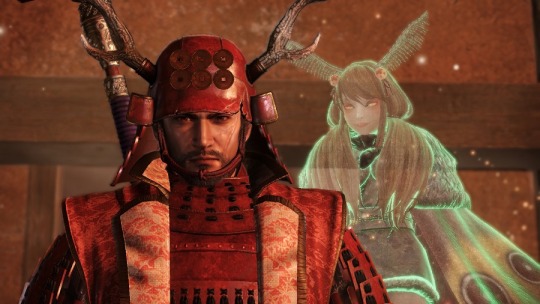
The game works very well on the level of a slowly paced Soulslike or a more action oriented Ninja Gaiden style action game depending on the build and play style of the player, which is a great testament to its strong gameplay and level design. Just as well the game becomes significantly less hostile with another player in coop, and is a very satisfying exercise in teamwork. Larsa and I decided to play the base game in its initial difficulty level solo before teaming up to take on subsequent difficulty levels, and we can vouch for the fact that it makes an excellent game for gamer couples especially since the nature of coop allows the player duo to help take the load off of each other. It is as excellent an exercise in teamwork as it is a bonding experience thanks to the tense nature of its gameplay.
Nioh also introduces new mechanics consistently through its entire run even into the final difficulty level of new game plus where there is a whole new tier of gear with its own additional abilities which is a very impressive feat. For as much good as there is to say there is a big asterisk which may deter players as health recovery items are a finite resource not indefinitely restored unlike in Dark Souls, and players must conserve and find more lest they wind up with only limited guaranteed healing. This can gate lesser skilled players out of progress without hope of making it through the game without a lot of practice or getting help from a friend. Another small complaint is the minimap which is a featureless circle in the top right corner of the screen that only provides very minimal information to the player without having an ability such as 'kodama sense' attached to their gear, which displays hidden collectables scattered through stages that provide bonuses such as ultimately 25% more experience or a 5% increase in drops to weapons or armor as a green dot on the minimap.
Nioh indeed has much to gush about, and in many ways it represents the maturation of Tecmo-Koei's library of games. A fun alt history romp through the Sengoku that the company is very familiar with coupled with a fresh coat of paint in its action-horror dark fantasy elements that hearkens back to a little-remembered in today's zeitgeist game in Ninja Gaiden as well as megahit Diablo, the old meets the new in so many satisfying ways making Nioh a joy to have 100%ed (taking roughly 100 hours to have unlocked all achievements). It may owe its existence as a finished product to Dark Souls, but it is far less of a Soulslike than you may have heard or expect and has so much to offer on its own and as an extension of some of the gameplay featured in Ninja Gaiden. It is a joy to play on its own or with a friend/loved one and rewards your time spent with it considerably even far later into the experience than one might expect.
Nioh is immediately available via Steam and the Playstation Store on PC, PS4 and PS5.
A gem hidden among the stones, Nioh is undoubtedly stardust.
-- Ash
#gaming#video games#acquired stardust#ash#game spotlights#gaming spotlights#nioh#koei tecmo#ninja gaiden#samurai warriors#soulslike#team ninja#ps4#playstation 4#ps5#playstation 5#masocore
13 notes
·
View notes
Note
Boruto flopping does makes sense tbh sp basically copied every scenes of sns and narusaku which is parallels with biased hope for shipping and nothing else! None of the characters got development rather than creating unneccassary fillers arcs and anime canons.
Sarada is a uchiha yet she is freaking embarrasing the entire time. Jealous of boruto and wanna be hokage just for fame and no other reason behind it🤦♀️ Naruto 24/7 yelling I'm gonna become hokage" have his reason and past which make sense but her dream is freakin fame clout chaser and mitsuki is being used as sai which is totally sad and sumire is not even in anime the half time and manga her presence matter more than sarada right now and if borusumi endgame then there gonna be protest like she didn't appear once shit💀 Sp is ruining the show!
The worse fact I totally hate about sarada is that she had no flashback or sad backstory just got bland normal ass who is my daddy finding arc? And even boruto story got changed in prophecy arc& love it that he is not just brat who wants his dad attention, finally a main goal but kawaki,sumire,mitsuki are the character they should focus more because of their sad past and all we are getting her salad getting her sharingans!
Can't wait to see how they gonna change and destroy prophecy arc to make her speech like hinata in front of kawaki and just her yelling crying and all characters got nothing but less panels and cut scenes as compared to manga😅 and also don't forget sp forcing kawasumi☠ and I'm already saying this that even her 3 tomoe arc gonna be centered and the reason of awakening will be boruto☠
Yeah like some of the canon anime only arcs are really good cause they have a proper story behind them and planned out cause the author of the manga was heavily involved. Later though you can clearly tell the difference between the fillers and proper eps, what makes it worse is cause they are fillers the story gets pulled down so much cause they are so bias that they do things that make no sense.
Sarada does have a reason to be Hokage it is cause of Naruto helping her family during Gaiden, but feels like she doesn't properly get what it means. She just found someone to look up and is copying Naruto there are several times were she doesn't show the usual will of fire and team spirit, but does a 108 after hearing Naruto's opinion. Like with Kawaki she hated him at first, but after seeing Naruto she switched to being all supportive cause she is the future Hokage.
Yeah Mitsuki got some spotlight in the filler arc, but still doesn't feel he is meeting his full potential when he is clearly one of the best next gen characters. Same with Sumire like she was shown to be match for veteran adult ninja, but she gets majorly nerfed later in the anime. Like skill wise she should be above Sarada with only Boruto and Mitsuki being equal in their ages group. Since Sumire was trained by a former root and lived to exact revenge on the village till recently. Even with Nue being weakened she should be able to do so much more, but she's been weakened to match the level of the rest of the genin.
Yeah SP forcing Kawaki and Sumire is just ruining the feeling the manga gave. Like Sumire showed actual concern when she overheard that Boruto almost died, but they removed to have it seem as she was visiting not that she was only there due to being Amado's assistant.
0 notes
Text
Tubi Adds In This Corner of the World, Liz and the Blue Bird, and More
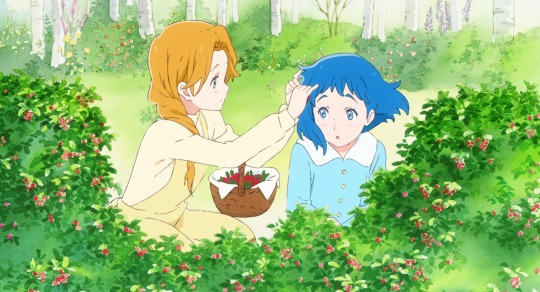
Screenshot via Eleven Arts
Tubi continues to grow its anime offerings, following the recent deal inked with Toei Animation to add episodes of shows like One Piece and Dr. Slump. The latest has Fox's free streaming service teaming up with Shout! Factory to stream a handful of acclaimed titles, including In This Corner of the World, Millennium Actress, Liz and the Blue Bird, Penguin Highway, and more.
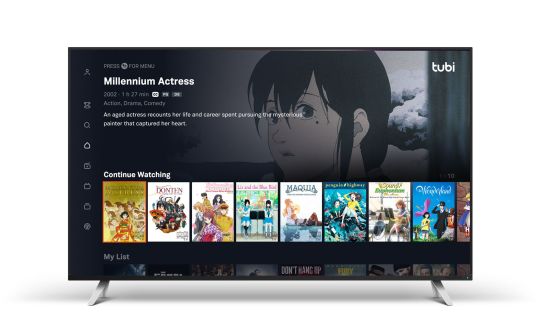
The free additions will be available both subbed and dubbed starting April 8. In This Corner of the World will join the Tubi lineup in 2022. Here's an overview of everything that's on the way:
Millennium Actress
Winner of Tokyo Anime Award and nominated for multiple Annie awards, this gorgeous new restoration is what many believe to be Satoshi Kon's (Perfect Blue, Paprika) greatest work. When the legendary Ginei Studios shuts down, filmmaker Genya Tachibana and his assistant are tasked with interviewing its reclusive star, Chiyoko Fujiwara, who had retired from the spotlight 30 years prior. As Chiyoko recounts her career, Genya and his crew are literally pulled into her memories where they witness her chance encounter with a mysterious man on the run from the police. Despite never knowing his name or his face, Chiyoko relentlessly pursues that man in a seamless blend of reality and memory that only Satoshi Kon could deliver. The film also garnered the Grand Prize in the Japan Agency of Cultural Affairs Media Arts Festival.
Liz and the Blue Bird
Directed by Naoko Yamada, students and best friends Mizore Yoroizuka and Nozomi Kasaki prepare to play a complex musical duet, "Liz and the Blue Bird," for oboe and flute. Though they play beautifully together and have been friends since childhood, Mizore and Nozomi find that with graduation looming and the duet proving difficult, their friendship begins to buckle under the pressure. Interspersed with their story is the fantasy tale of Liz, drawn like a storybook, contrasting with the crisp realism of the school. These two distinct styles weave with stirring music to tell an intimate coming-of-age story. The film was nominated for Best Film at the Crunchyroll Awards.
Maquia: When the Promised Flower Blooms
Though only 15, Maquia knows she will live for centuries without aging past adolescence. She belongs to the Iorph, a clan of ageless beings just like her. Maquia's elders warn her not to fall in love with anyone outside their realm. But fate pushes Maquia out into the mortal world one night when an invading territory separates her from the clan. There she discovers an orphaned baby, Arial, and takes him in as her own child. From this point, Maquia will suffer extreme heartbreak in the name of motherhood, as she watches Arial grow and seeks to reconnect with her lost Iorph friends, all torn apart by the cruel world of Mesate.
Penguin Highway
Budding genius Aoyama is only in the 4th grade, but already lives his life like a scientist. When penguins start appearing in his sleepy suburb, hundreds of miles from the sea, Aoyama vows to solve the mystery. When he discovers that the arrival of the penguins is somehow related to a mysterious young woman from his dentist’s office, they team up for an unforgettable summer adventure! The film was nominated for Best Animated Film at the Japanese Academy Awards.
The Wonderland
On the day before her birthday, young Akane meets the mysterious alchemist Hippocrates who brings her through a basement and into a fantastical world full of magic and color. Though things seem peaceful on the surface, he reveals this world is in danger and as the destined Goddess of the Green Wind, it is Akane's responsibility to bring back the rain and save this world from the terror known as Zan Gu. Joining Akane on her journey is Pipo, an alchemist in training, and her adventurous Aunt Chii. The only problem? Akane just wants to go home. The film is directed by Keiichi Hara.
Sound! Euphonium: The Movie – Welcome To The Kitauji High School Concert Band
Sound! Euphonium: The Movie – May The Melody Reach You
Sound! Euphonium: The Movie – Our Promise: A Brand New Day
Based on the manga and television series, the Sound! Euphonium movies follow Kumiko, a young girl at Kitauji High School who plays euphonium in her school’s orchestra. Follow the band on their mission to reach Nationals while juggling romance and adolescence.
Haikara-San: Here Comes Miss Modern Parts 1 & 2
Adapted from Waki Yamato's popular manga, Kazuhiro Furuhashi’s Haikara-San is a heartfelt, and sometimes comical, tale of love surviving through the perils of war and separation.
Donten: Laughing Under the Clouds Gaiden
One Year After the Battle, The Tragedy of Fuuma Ninja Tribe, and Conspiracy of the Military
It's been a year since brothers and shrine guardians, Tenka, Soramaru, and Chutaro, have defeated the legendary giant snake that threatened to destroy humanity. However, their lives are thrown into upheaval when they discover a plot to revive the evil serpent.
In This Corner of the World
Based on the award-winning manga by Fumiyo Kouno and brought to life by acclaimed filmmaker Sunao Katabuchi (Mai Mai Miracle) and producer Taro Maki, In This Corner of The World tells the emotional story of Suzu, a young girl from Hiroshima, who's just become a bride in the nearby city of Kure during World War II. Living with her husband's family, Suzu has to adjust to her new life, which is made especially difficult by regular air raids. But life must go on, and Suzu — through the help of her new family and neighbors — begins to discover the joys of everyday life in Kure. Much is gained in Kure, but with war, many things cherished are also lost. In This Corner of The World is brought to life, in stunning animation, by acclaimed filmmaker Sunao Katabuchi (Mai Mai Miracle) and producer Taro Maki. The film was also nominated for Best Film at the Annie awards, among several other wins and nominations.
Source: Press release

-------
Joseph Luster is the Games and Web editor at Otaku USA Magazine. You can read his comics at subhumanzoids. Follow him on Twitter @Moldilox.
By: Joseph Luster
3 notes
·
View notes
Text
Kimetsu no Yaiba Chapter 172 Review
youtube
It was great to see the introduction of the Pillars again, now in anime form. For anime viewers, they are interested to see their depth and personality. For us, we are praying that those faces will return alive and well. We already lost Shinobu; let’s not lose anyone anymore. Unfortunately, the recent development is filled with death flags and Kokushibo, now in his possibly (and hopefully) final form, will make sure at least one will die. This chapter did not ease my fear, but the cliffhanger has a sign of hope; even if it results to sacrifice.
The chapter’s cover once again tells a story in the same setting with the same two characters, Tokito and Genya. I like the fact Genya is now the one helping Tokito. It parallels to the last chapter’s cover, only the role has been reversed. It creates a tender moment of comradery; assisting to get back to the fight. It’s worth noting that Genya taped up Tokito’s right hand with his sword. It’s the only way for him to grip tightly, so that’s smart thinking. After the tenderness, it’s all fear factor challenge.
The last chapter stunned me with the sudden attack that took Himejima and Sanemi by surprise, thanks to Kokushibo’s abs. Joking aside, I thought taking slashes were bad enough, but there’s one more thing. Sanemi’s two fingers were cut off. It actually stunned me since the series carefully makes these sorts of damages crucial as any other. Usually, you’ll see a series treating a moment of losing a limb as minor or whatever, but here, it’s like real-life; it’s damn scary.
What’s even scarier is that Sanemi was going to lose far more and much more fatal if it wasn’t for Himejima’s chain to lessen the damage. I suppose this means it was a close call, but even then, he still lost something, let alone taking a beating. It becomes a lot more worrisome when Sanemi begins to lose confidence in his ability. On one hand, it’s nice of him to be concerned with Himejima’s safety. He’s really not the dirt-bag that the anime reminded me again. On the other hand, his shaky confidence makes me believe he will pull a sacrifice to aid everyone. In other words, his death flag is far above everyone else’s.
I have speculated before that maybe other Pillars could join in to assist, mainly Giyu and Tanjiro. Sure enough, so does one of the sisters of Ubuyashiki Family as she wants to send them. However, Kiriya declines; confident that those Pillars are enough and will win. It is reassuring that they have a chance to win, but it’s terrifying as well. While not exactly guaranteed, the opportunity for backup is gone; the fans are to believe that there will be no more addition. With this current situation, the possibility of (at least) one death is critical.
The action engage and as far as one-sided goes, it’s pretty tensed. Normally, this would have been the usual pattern of one has the upper-hand, so enter the next form, but since Kokushibo has been the dominant force from the get-go, I was absorbed by the intensity. Not to mention, the chance of death has me convinced to be afraid; be very afraid. Although he is clearly overpowered, the Pillars have to be completely evasive, which changes the flow in a good way. It gets you on the edge of your seat. Himjima does well to evade; Sanemi, however, does not.
As if his death flag wasn’t high enough, the intensity of Kokushibo’s barrage of Moon Breathing, which by the way pretty damn cool, builds the moment of Sanemi’s demise. There’s so much to cringe out of fear; Sanemi’s decline in agility only makes it worse. At one point, it looked like he dodged the Waning Moon-swaths, but the pattern of its attack is so random, it eventually catches him. This is some kind of Ninja Gaiden non-sense. If you never played that game, good. It’s hard as hell.
The tension rises as Sanemi slowly enters his death bed. I have to say, it’s somewhat crushing to read Himejima’s cry for him. They had a rough start, but they couldn’t be any friendlier today. I also have to say, the artwork of the action sequence is great, mainly on all Moon Breathing Forms. It’s a barrage of moons coming at you with a ridiculous pattern or lack of. The single page of Drilling Slashes left me on the edge of my seat.
Normally, I would think, “He won’t die here,” and while it can be seen as such, my mind wasn’t processing that. That’s how invested I am in this fight that distracted my thought process. That’s a good thing. Fortunately, he does get rescued in time, by Tokito no less. What a huge sigh of relief. I would have liked for Genya to save him, but there’s something else in store, so it’s fine. One way or another, a save is a save.
With Genya, he’s struggling with fear and his confidence is slipping. I don’t know if it was intentional, but within the same chapter, the brothers have confidence issues. Blood is thicker than water. It’s hard to be upset with him since he was quickly defeated and nearly got killed in seconds. That would kill all motivations and confidences. He wants to help, but he despise himself for being weak. Leave it to Tanjiro to give a friend an inspiring advice.
I like how the advice encourage the weak that is backed up with its past moments. It’s a great reflection of the underdog’s tale; a theme that has been carried faithfully throughout the journey. To be specific, Tanjiro’s battle with Upper Moon 6; one in which left me with an astonishing rewarding feeling. It’s believable to me, so it can translate well to Genya. The idea is, the weak has its own perk and that is the element of surprise. The weak may be ignored, but their enemy won’t see it coming. It is true when they don’t expect much, let alone being cocky. This awakens Genya to not only go for it but consume the sword. It’s a huge gamble and very concerning; but, I am thrilled to see him to shine next time.
This was a solid chapter with solid artwork. The battle is brewing up for a climatic end and that highly likely includes death. Sanemi’s life had me shaken, but fortunately, he survived. Even so, his death flag remains the highest. Genya’s spotlight is next, assumingly so, based on the cliffhanger and his reaction that suggest a power-up. I hope it is good enough to land a hit on Kokushibo, the man who is barely touched by anything. Will this increased power do the trick or not? Anything is possible, and that’s where the hype is at.
19 notes
·
View notes
Text
Noble or Nefarious, some of gaming’s greatest Ninja warriors!
Ninja’s. the warriors of shadow. They lurk in the darkness before striking. Often armed with powers considered magical, or weapons that require great skill. These Ninja are no longer in the shadows, as they are taking the spotlight. As a rule for this list, no Ninja that originate from anime will be on this list, so namely, no Naruto characters. (Also, for anyone who does not know… Kunoichi means female ninja, keep that in mind.)
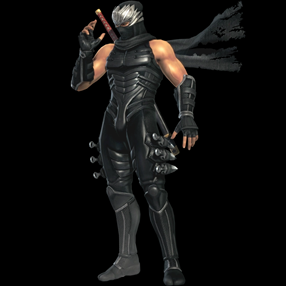
Ryu Hayabusa (Ninja Gaiden) One of gaming’s most legendary Ninja. Ryu Hayabusa has gone on several death defining journeys. He has saved the world from men and demons alike. Armed with a wide assortment of weapons and ninjutsu, Ryu dispatches his foes with no mercy. Ryu does not fear death, nor does he hesitate in striking down his foes. In the ninja gaiden series, Ryu fight hundreds of brutal opponents, he utilizes acrobatics and masterful swordplay. In the Dead or Alive series, he relies on skillful hand to hand combat. When not in combat, Ryu is a Curio shop owner and is the love interest of a female American agent. Ryu has appeared in various other games either as a guest character or a cameo as well.
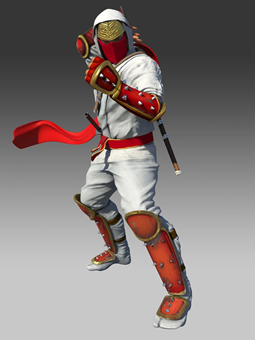
Joe Musashi (SHINOBI) Sega’s response to Ryu Hayabusa. Joe Musashi is one of the main characters of the SHINOBI series. A ninja from the Oboro clan. Joe is half American half Japanese and is quite the skilled warrior. Proficient at ninjutsu and shuriken throwing, Joe has fought evil since his early twenties. Joe is a righteous man who strives for world peace and has clashed with the evil terrorist syndicate Zeed on several occasions. He would eventually become the head of his clan and would continue defending the world from evil.
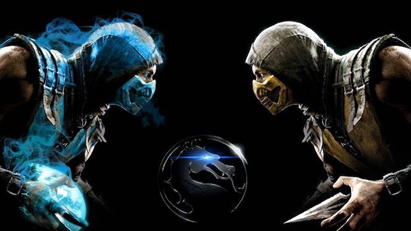
Scorpion & Sub Zero (Mortal Kombat) Scorpion and Sub-Zero, one of the most iconic rivalries in video games. The Sub-Zero we all know and love is the brother of the original Sub-Zero. Scorpion is a wrath obsessed with revenge and can rarely see past his own anger. Sub zero can control ice and can use it to freeze opponents solid while in battle. Sub-Zero is calm and calculated and is the leader of his own people. He tries his best to be a good leader but is not afraid to bust some heads while doing so. Scorpion is a fallen soul that was given a second chance to enact revenge. While the target of his revenge is Noob Sabot, he tends to target the current Sub-Zero. Scorpion is adept in his knife throwing and has decent manipulation over fire. Scorpion is undead and very angry, rarely listens to reason and tends to be the one who stats fights. In some cases, the two put aside their differences and work together, when that happens they become near unstoppable.
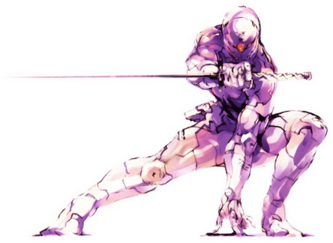
Grey Fox (Metal Gear Solid) Frank Jaeger, also known as Grey Fox is a mercenary turned vengeance fueled cybernetic ninja. Frank made an appearance in the first Metal Gear title as the infiltrator of outer haven, he was captured and rescued by Snake. He would disappear after the supposed Death of Big Boss. In Metal Gear 2 he reappears, this time as Snake’s enemy. Having sided with the real Big Boss, Fox tries to drive Snake away several times but ultimately fails. The two engage in a fist fight and Fox loses and supposedly dies. Later, in Metal Gear Solid, Fox returns in his famous cyborg ninja garb. A man obsessed with fighting Snake once more, he is a rogue card in the Shadow Moses incident. He eventually turns to Snake’s side and dies in the games finale. His death would carry a legacy that plays a large role in MGS4. As a cyborg ninja, Fox can render himself invisible and deflect bullets with his sword. He strongly prefers fighting hand to hand.

Kat and Ana (WarioWare) Not every Ninja is a shadowy warrior that leaves behind a trail of bodies. Kat and Ana are two young ninja in training. Their name is a pun on the word Katana. When they are not in school they are training to become professional ninja, but usually something silly happens in the process. Their microgames in the wario ware series vary from game to game, covering themes such as nature, ninjas and everyday life. They also appear as an assist trophy in the smash series.
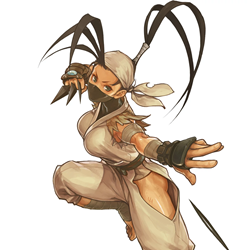
Ibuki (Street Fighter) A young Kunoichi in training from the street fighter series. Despite her training, Ibuki acts like a normal teenage girl. She is not to fond of her training and finds it bothersome but takes it seriously nonetheless. She tends to sneak off and skip her duties to do her own thing. She desires to meet cool and handsome guys and will often judge her foes based on the way the look, act and dress. At some point she fights an immortal hermit named Oro, and even though she lost, it was considered her final test and she was granted a pass. She then went to university for ninjas.

Kaede (Onimusha) A ninja assassin who would dive headfirst into combat regardless of the risk. At some point in the past she was sent by an unknown benefactor to assassinate a mane named Samanosuke Akechi. She instead became his ally and eventual lover. The two would travel together over the next couple years. She plays a role in several Onimusha games, usually aiding her lover or searching for him when he went missing. Eventually she would fall in combat at the hands of Gargant. After her death, she is still remembered fondly by her widowed lover.
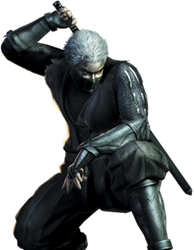
Rikimaru (Tenchu) A young master class Ninja assassin. Raised and trained by the man who killed his parents, Rikimaru was turned into a deadly warrior since an early age. Stoic and ever so serious, Rikimaru is loyal to Lord Gohda. He has helped quell rebellions and has fought off rival ninja clans to ensure Lord Gohda’s protection. A detached man, Rikimaru is very rarely influenced by emotions. He is skilled in many forms of combat and swordsmanship and is the current head of his clan.

Yuffie Kisaragi (Final Fantasy VII) A teenage kunoichi thief who desires to restore her homeland of Wutai. She is one of the secret characters of FFVII and makes her debut by trying to steal Cloud’s materia. A spunky, emotional girl, Yuffie can act quite childish at times. She tends to get on her allie’s nerves but can be a skilled comrade in battle. Yuffie fights with a giant shuriken. As the series goes on, Yuffie grows up and matures a bit but still has an immature demeanor at times. She also appears in Kingdom Hearts as one of Sora’s first allies.

Strider Hiryu (Strider) A master spy and an active Strider agent. Hiryu’s name, nationality and age are all top secret. The most info on him other than his appearance is that he was born in 2030. Hiryu is extremely skilled and collected in combat, often considered to be the top Strider agent to date. Being able to dodge bullets and defeat tons of enemies without showing fatigued, Hiryu is often the one who is left standing. Eventually the other Striders are whipped out, and he is the sole survivor. While he could easily flee, he chooses to fight. It is this bravery and tenacity to survive that make him an excellent Ninja.
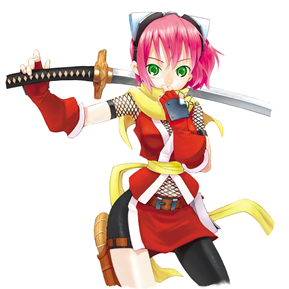
Izuna (Legend of the Unemployed Ninja) A 16-year-old kunoichi who is down on her luck. Izuna and her clan were kicked out of their castle because their leader thought Ninja were obsolete. Stubborn and somewhat clumsy, she winds up accidently offending the gods and must go on a quest to set things right. Surprisingly enough, she is a gifted individual that can allow gods to leave their shrines and support her. While not the most skilled ninja on this list, she is a kunoichi nonetheless.
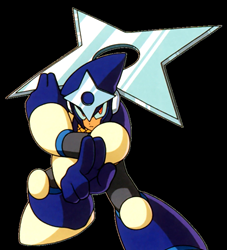
Shadow Man (Mega Man) A ninja robot master who originated from Mega Man 3. A skilled martial artist hwo loves to sneak up on people, Shadow man is surprisingly impulsive. He has a variety of attacks, such as creating a clone or using a smokescreen in battle. His weapon is the shadow blade and he is weak to the incredibly useful top kick. He reappears in several other games as well which further his ninja skills. Shadow man is possibly alien in origin as well.

Wonder White (Wonderful 101) A superhero and a ninja in training. Wonder White, known by his real name Momoe Byakkoin and his other super name, the claws of calamity, is one of the heroes of Wonderful 101. Armed with special weapons passed down from generation to generation, White is a speed oriented fighter. A man who enjoys long entrances and spouting philosophy, he can be somewhat of a nuisance. While calm and cooperative, Wonder White is very talkative… Not very fitting for a ninja.
--------------------------------------------------------------------------------
Sorry this one took a while. I was sick for the past day or so and typing just wasn’t going to happen. This list took me a while to write as well but hey! Its done! Thanks for reading, next time we will either look at some factory levels, or… If we reach 30 followers (we are at 29!!!) I will start my 5 part follower appreciation special! See you next time!
#ninja gaiden#shinobi#mortal kombat#metal gear solid#warioware#street fighter#onimusha#tenchu#final fantasy#ffvii#strider#izuna#legend of the unemployed ninja#mega man#wonderful 101#ninja#kunoichi#video games#gaming#ryu hayabusa#dead or alive#joe musashi#sub-zero#scorpion#grey fox#kat#ana#ibuki#kaede#rikimaru
19 notes
·
View notes
Text
Nioh: The Complete Edition goes free today on the Epic Games Store, two more coming next week
Both the Complete Editions of Nioh and Nioh 2 are on the Epic Games Store starting today, with the former going free for a week. Yes, both of Team Ninja’s incredible Souls-likes have made it onto the storefront today. Epic has, at times, dropped surprise free games before. And both Nioh games, with the first free to claim on the service, is a nice surprise indeed. Nioh joins Sheltered, which was already scheduled to be given away today. A lot changed for Team Ninja with the release of Nioh in 2017. The Ninja Gaiden and Dead or Alive developer hadn’t published a major, breakthrough game in some time. Nioh, a Souls-like set in 1600s Japan, brought the developer back to the spotlight. Based very loosely on the story of William Adams, who became one of the first Western samurai, its narrative followed William as he hacked and slashed through waves of yōkai (Japanese demons). Did I say very loosely? Because other than borrowing the name, I don’t believe the real ... Published first at Nioh: The Complete Edition goes free today on the Epic Games Store, two more coming next week
0 notes
Text
Spotlight: The Messenger
#indiegame Spotlight: @messengergame by #indiedev @sabotageqc
At E3 2018, we got some hands on time with Devolver Digital and Sabotage’s upcoming retro inspired action platformer, The Messenger, and it looks like its shaping up to be a worthwhile experience.
Heavily inspired by Ninja Gaiden, The Messengertakes place in a feudal Japan like setting and will have players take on the role of a ninja who must deliver an important scroll to his village to help…
View On WordPress
2 notes
·
View notes
Text
Ninja Gaiden Spotlight: Ninja Gaiden (Arcade) & Ninja Gaiden (NES)
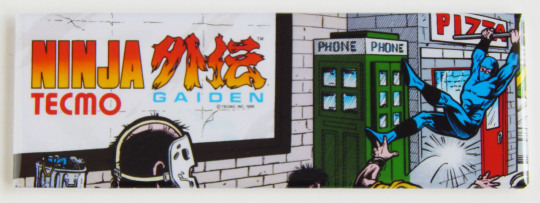
Ninja Gaiden is a strange franchise for a number of reasons. Although most people are familiar with the name through the NES games or the later Xbox-born revival, Ninja Gaiden got its start in the arcades. Curiously, although Tecmo is a Japanese company, Ninja Gaiden (Arcade) was first released in North America. While the series technically began with the arcade game, however, it didn't really hit the radar of most players until the first NES game, also titled Ninja Gaiden. In this article, we'll be taking a look at both of those games.
Ninja Gaiden (Arcade)
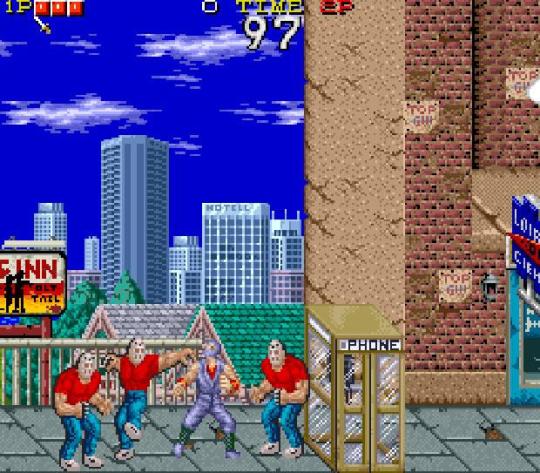
Original Release Date: October 1988 (NA)
Original Hardware: JAMMA PCB
Ninjas were a hot-ticket item in the 1980s, and just about everyone around the world knew it. Once renowned for their ability to stay out of sight and stick to the shadows, ninjas were suddenly showing up in all kinds of wild places. One popular sub-genre of the ninja boom was the American ninja. Sometimes these would literally be American characters who somehow became ninjas, as seen in the astonishingly long-running American Ninja series of films. Other works of fiction simply placed groups of ninjas in American locations, typically as antagonists, as in Daredevil or the Teenage Mutant Ninja Turtles. But if there was one other kind of theme that North Americans were in love with during the 1980s, it was the fish-out-of-water story. Just imagine the laughs you can get from putting a stranger in a land that seems mundane to us but positively bizarre from the character's point of view. Or don't imagine and just watch Crocodile Dundee. I won't judge you.
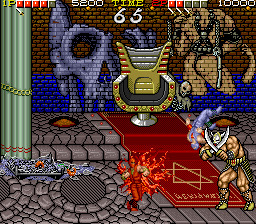
The funny thing is, not all of these stories came out of the minds of American creators. As infatuated as Westerners were with Japanese culture in the 1980s, Japanese were equally head-over-heels with the United States. Thus, we have Ninja Gaiden, a game that somehow started a successful franchise in spite of its main redeeming trait being just how stupid it is. Initially released in North America in 1988, it's a side-scrolling beat-em-up in the style of Double Dragon. One or two players guide their ninja character through stages based on major American tourist traps, dodging traffic in New York City, jumping across the neon-lit signboards of Vegas, and kicking Jason Voorhees look-alikes into the Grand Canyon. The story goes that your ninja heroes have been hired to take down an evil, sword-wielding descendant of Nostradamus named... Bladedamus. No, I'm not kidding.
As these kinds of games go, Ninja Gaiden is not a very good one. It's stingy and quite difficult, and although you have an assortment of moves at your disposal, the only truly effective one is a leaping throw. There are some interesting gimmicks woven into the gameplay, such as the button on the top of the stick that allows you to grab onto overhead handholds and so on. You can also run up and flip off of walls, and if you happen to have the sword power-up at the time, you can launch a deadly attack by doing that. In general, there's quite a bit more jumping and platforming than you would usually see in a belt-scrolling brawler. Many of the fundamental rules of the genre weren't etched in stone by this point, so you tended to see a lot of experimental titles like this.
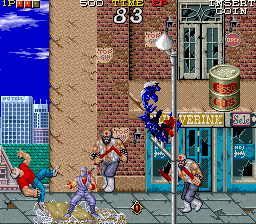
If Ninja Gaiden has any real merit, it can be found in the sheer amount of bizarre nods to Americana it contains. The game carelessly skirts the legal line with its parodies and homages, most notably in its inclusion of the pro wrestling tag-team Legion of Doom as recurring bosses. Every time they appear, they’re accompanied by a barely-disguised copy of Black Sabbath’s Iron Man, which was their ring entrance music at the time. The Legion of Doom were regularly wrestling in Japan at the time, so it’s not too hard to see how the inspiration struck the development team. At the same time, it caused some problems when the game was re-released on the Wii Virtual Console. The music had to be replaced to avoid legal issues. Some of the graphics were altered as well, for mostly similar reasons.
That Virtual Console port represents one of the few times the arcade version of Ninja Gaiden came to a home console. It was ported to a number of home computers in Europe under the title Shadow Warriors, and had a handheld port to the Atari Lynx. It was also included as an unlockable bonus game in Ninja Gaiden Black on the Xbox. It’s not hard to get your hands on this game if you really want to, but outside of its historical importance, I’m not sure what you would get out of it. I suppose we can thank Ninja Gaiden for introducing us to Ryu Hayabusa, but he was coming one way or another anyway.
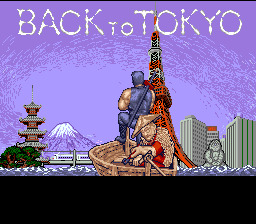
Ninja Gaiden (NES)
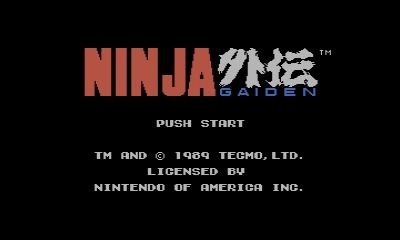
Original Release Date: December 9, 1988 (JPN)
Original Hardware: Nintendo Entertainment System
The NES version of Ninja Gaiden was developed alongside the arcade version, and although it shares a name and some promotional artwork, it’s a very different game. While it seems like both games came out of the same basic idea of a Japanese ninja in America, the NES version quickly ditches the garish Americana. Only the first level and its boss encounter show any signs of the American setting, and Ryu’s journey takes him around the world by the end of it all. The arcade game was chasing after the hot side-scrolling beat-em-up genre, but on consoles the platformer genre was much more popular. There was also no real need to shake down players for quarters, so the development team could take a marginally gentler approach to the difficulty. Well, they could have, anyway.
To be fair, Ninja Gaiden does pull its punches early on. After watching a very cool opening cinema showing Ryu’s father falling in a dramatic duel, the player is tossed into the game’s first level. It’s pretty much a straight horizontal shot to the end of the level, with a few obstacles and enemies placed in the way to teach the player the basic mechanics. At first, the player isn’t required to do any climbing, and every enemy comes at Ryu slowly from the right side of the screen. About halfway through, it turns up the heat a little, with speedy enemies approaching from the rear and structures that the player is forced to climb in order to proceed. It’s extremely likely the player will take a few hits along the way, which will teach them how Ryu flies back when he takes damage. Almost every item you can encounter in the game makes an appearance in the first stage, too. This is as much of a tutorial as the game is willing to give you.
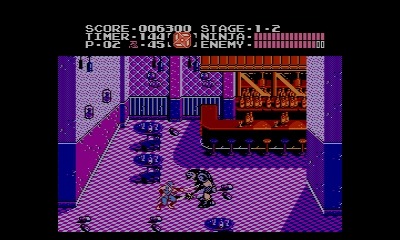
The first boss is also quite the softy. He slowly marches toward the player, stopping every so often to swing a couple of times with his machete. He’s short enough to jump over, and his weapon has a shorter reach than Ryu’s Dragon Sword. If you happen to get too close, ducking will put you underneath his swing. It’s almost impossible to lose to him unless you really haven’t come to grips with the basics of controlling Ryu. After beating the boss, you’re treated to another dramatic cinema scene, setting the pace for the game to come.
Cut-scenes like these were a rarity at the time, and although the story is completely absurd, having it depicted with such detail grants it a much bigger impact than the equally silly stories of other games of the time. This emphasis on dramatic camera angles and moody settings makes a bit more sense when you find out that Ninja Gaiden was among the first video games worked on by a young Masato Kato, who would go on to work on the scenarios of games like Chrono Trigger, Final Fantasy 7, and Final Fantasy 11. A superb soundtrack by Keiji Yamagishi and Ryuichi Nitta accentuates the ever-changing atmosphere that the game builds from level to level. Like many of the best soundtracks of the era, the music sets the beat for the player’s actions throughout the game. Most of the background music has a frantic quality to it that has you on the edge of your seat the whole time.
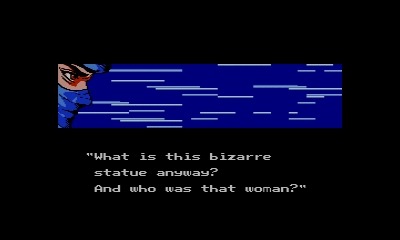
The second act starts off similarly to the first, having the player make their way out of a prison along a largely horizontal layout. The main difference here is that there are some small vertical elements and the odd bottomless pit. It’s possible that you might be knocked to your death if you play carelessly, but quite unlikely. Coming out of the prison into the fresh air, the game starts to show its true face for the first time. The ratio of safe footing to pits begins to tilt against the player. There are quite a few small ledges patrolled by enemies that lob projectiles at the player, requiring careful timing to avoid being knocked back to where you started from, or worse, into a pit. The only act of mercy on the game’s part is in how it spreads out the power-ups and sub-weapons in this stage. You’re usually given the most helpful possible item for the situation at hand, and furnished with plenty of magic points to use them with. Thanks to that, most players should be able to make their way through this act. The boss is quite similar to that of the first stage, albeit taller and with a longer reach. This requires a better stick-and-move strategy, but if you’ve made it this far, you shouldn’t have too many problems.
An infamous enemy makes its first appearance in the third act of the game. To observers, it’s merely a bird, but to veterans of the 8-bit era, it’s a symbol of a thousand missed jumps and aggravating deaths. Its speedy, erratic movements can make it hard to take down quickly, and it’s almost always placed in positions where it can cause the most suffering. Where there is a tiny ledge surrounded by bottomless pits, there is the bird. Where there is a tricky jump, there is the bird. Where there is a seemingly safe, wide stretch of land, there are two birds. The combinations of enemies and significantly more dangerous layouts make the third act a real stepping-up point in terms of difficulty. By comparison, the boss is a bit of a relief. It jumps in a predictable pattern from one side of the screen to the other, occasionally firing a volley of bullets as it takes off. It’s a different challenge from the first two bosses, but once you pick up its pattern, it’s not too tough to take down.
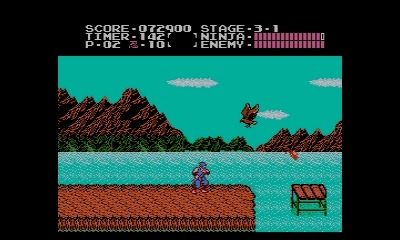
In my experience, the fourth act is a make-or-break point for a lot of players. The first couple of stages aren’t too much harder than what you’ve already been through, though the ledges are smaller and patrolled by more dangerous mixes of enemies. Bats are especially annoying with their lazy parabolic movements, and it’s almost impossible in places to actually take them out permanently since their spawn point appears mid-air. You’ll also have to start dealing with speedy ninjas that drop seemingly out of nowhere. It’s the third stage of the act where business really picks up. If you haven’t learned the ins and outs of Ryu’s capabilities by this point, you’re going to get bounced around like a little pinball. Power-ups are place in trickier places, and magic points to power your weapon attacks aren’t nearly as plentiful.
The boss of this act, Kelbeross, has the most random patterns we’ve seen from a boss enemy yet. He takes the form of a pair of dogs that leap around the room firing deadly balls of energy at regular intervals. Unlike the previous three boss rooms, this one has a couple of columns placed in it. They can be used as perches for Ryu, but it seems like they’re really there to make Kelbeross’s leaps harder to predict. One of the pair falls quite quickly, but the other one will put up a fairly good fight. You not only need to predict where his leaps will take him, but also keep an eye out for his shots. A good sub-weapon can make a huge difference here, provided you have the magic points to use it. Kelbeross isn’t quite as tough as the stage that precedes him, but he is the first boss to show any real teeth.
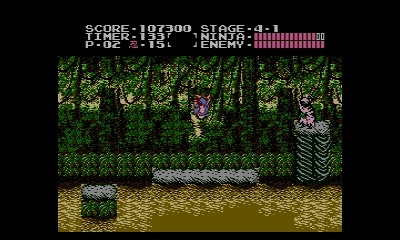
Get past that boss, and you’re onto the fifth act. For the most part, there’s nothing here you haven’t already seen, but if you don’t hate birds by now, you will. One of the favorite tricks of the designers in this act is to throw a bird out as you’re leaping to a ladder. If you don’t react with precision, you’ll almost certainly get sucker-punched. This act also contains one of the first real moments of cruelty in Ninja Gaiden. There’s a section where you need to carefully drop and stick to the wall in order to jump to a lower platform. This is tricky enough on its own, but the game also tosses out a bird here just to mess with you. If you can get through there, the rest of the act isn’t too bad, but that is a sign of the game’s changed intent towards the player. The line is to be drawn here, and not much farther. The act culminates in an oddly anti-climactic battle against a character named Bloody Malth. He can call down lightning, and the very act of the battle taking place on a rooftop makes things much more dramatic. He’s also the first boss to get a cut-scene before the fight, giving this fight a personal touch the others lacked. He goes down easily enough if you get in close, crouch, and slash like a madman, though.
Up to this point, Ninja Gaiden is a tough game, but largely a fair one. The NES had a lot of extremely difficult games, but not many of those games were as highly-regarded as Ninja Gaiden. I firmly believe it’s because this game gives the player enough rope early on to really get into the game and its mechanics. You’re so invested by the time it gets truly vicious that you want to see it through anyway. Even with that determination, very few players see Ninja Gaiden through to its close, and the sixth act is almost certainly why. There’s a lot to break down here, but let’s start with a programming bug that the developers liked enough to keep in. Usually in this game, if you lose a life, you’ll start back at the beginning of the current section. You’ll lose a little progress, but nothing major. And so it goes in the sixth act, until you reach the final boss gauntlet. If you die there, the game sends you all the way back to where you fought Bloody Malth. It’s a long, draining road to make the first time. Every trip after that feels like it’s asking for another little piece of your soul.
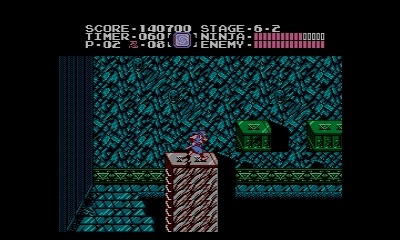
The sixth act is really, really hard. Ninjas with jetpacks fly by, lobbing shuriken at all sorts of angles. Speedy little leapers scoot around, jumping erratically. Birds, bats, enemies with projectiles, leaping ninjas, and every other thing the game can muster is thrown at you in increasingly hard-to-manage combinations. The Whirlwind Slash weapon helps a lot here, but it chews through magic points far faster than you’ll earn them. Almost every second of the climb sees you assaulted from multiple directions, and bottomless pits are everywhere. It’s all very unpleasant. And it’s nothing compared to the last set of bosses waiting at the end.
Now, as we’ve established, if you die at the final boss, you’ll be kicked all the way back to the first section of the sixth act. One small bone the game tosses you is that any bosses you beat stay dead, at least until you have to continue. The first boss of three has a tough-to-read pattern, and he commandeers much of the chamber in which you fight him. Making things tougher is that he is not your actual target. If you have the right sub-weapon, things go a little faster here, but it’s still pretty tricky. If you beat him, you get the usual end-of-stage roll where your remaining magic points and life points are added to your score, leaving you with a fresh life bar and zero magic points. This is bad, because you’re immediately thrown into a fight with the big boss Jaquio. He’s easy enough if you have the fire sub-weapon and a stock of magic, but unless you die and crawl all the way back here after beating the first boss, you won’t even have a single magic point to your name.
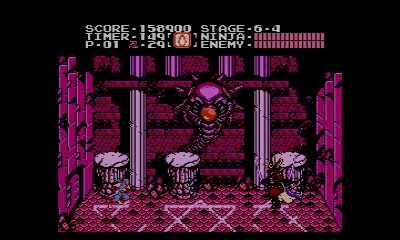
If your timing is good, you might be able to move between his shots and get your licks in. It’s easier to take the cheap way out, though. If you time it just right, you can get Jaquio to knock you outside of the screen boundaries near the top of the screen, giving you a convenient perch from which you can attack and dodge. Short of taking the loss and coming back with a proverbial ninja magic bazooka, this is the only method by which I’ve ever been able to beat Jaquio. I guess I should just be happy I can still beat him at all. Take him down, and the end-of-stage rigmarole happens again, once again ensuring that you won’t have any magic points for the next fight.
Yes, it’s not over yet. You now have to fight the demon statue itself in its true form. This is a large, impressive-looking boss that uses the trick of having the enemy be a background layer. There are three targets on his body, and unless you foolishly collide with the statue itself, you really only need to worry about the predictable energy bursts it rains down on you. Slice up its heart, and you’ll finally get the ending you so richly deserve. Individually, none of the three final bosses are all that bad, but the gauntlet combined with the added restrictions placed on you make it really hard to persevere. The ending is awesome, at least. I don’t know what I would have done if I had fought my way through all of that only to get a simple congratulations.
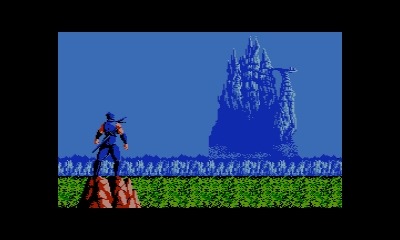
Even with the nasty difficulty spikes and cruel change of rules at the end of the game, Ninja Gaiden is an amazing game. There are a number of reasons for that. The controls are tight, Ryu’s moveset provides the player with a lot of fun options, and the large amount of sub-weapons gives you an opportunity to form your own style. The presentation is outstanding, and the story at least makes an effort. The way the game eases you in so that you’re invested in overcoming the more difficult hurdles is also quite the clever trick. I imagine most people give up anyway, but the amount of nastiness the average player is likely to put up with before reaching that point is surely the mark of some sort of achievement.
Difficulty balancing is an issue the Ninja Gaiden series would always struggle with across its many forms. While the first game doesn’t quite nail it thanks to the final boss gauntlet, I think this is as close as any of its developers would get to a satisfying level of challenge until the Xbox revival. But I’ll explore that more when I talk about the other two games in the NES trilogy next time around.
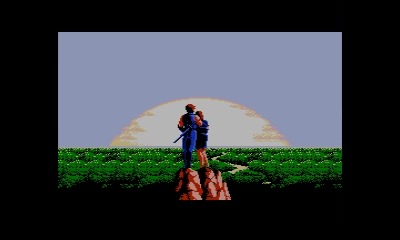
Next: Ninja Gaiden 2 & Ninja Gaiden 3
Previous: Introduction
If you enjoyed reading this article and can’t wait to get more, consider donating to the Post Game Content Patreon. Just $1/month gets you early access to articles like this one, along with my undying thanks.
1 note
·
View note